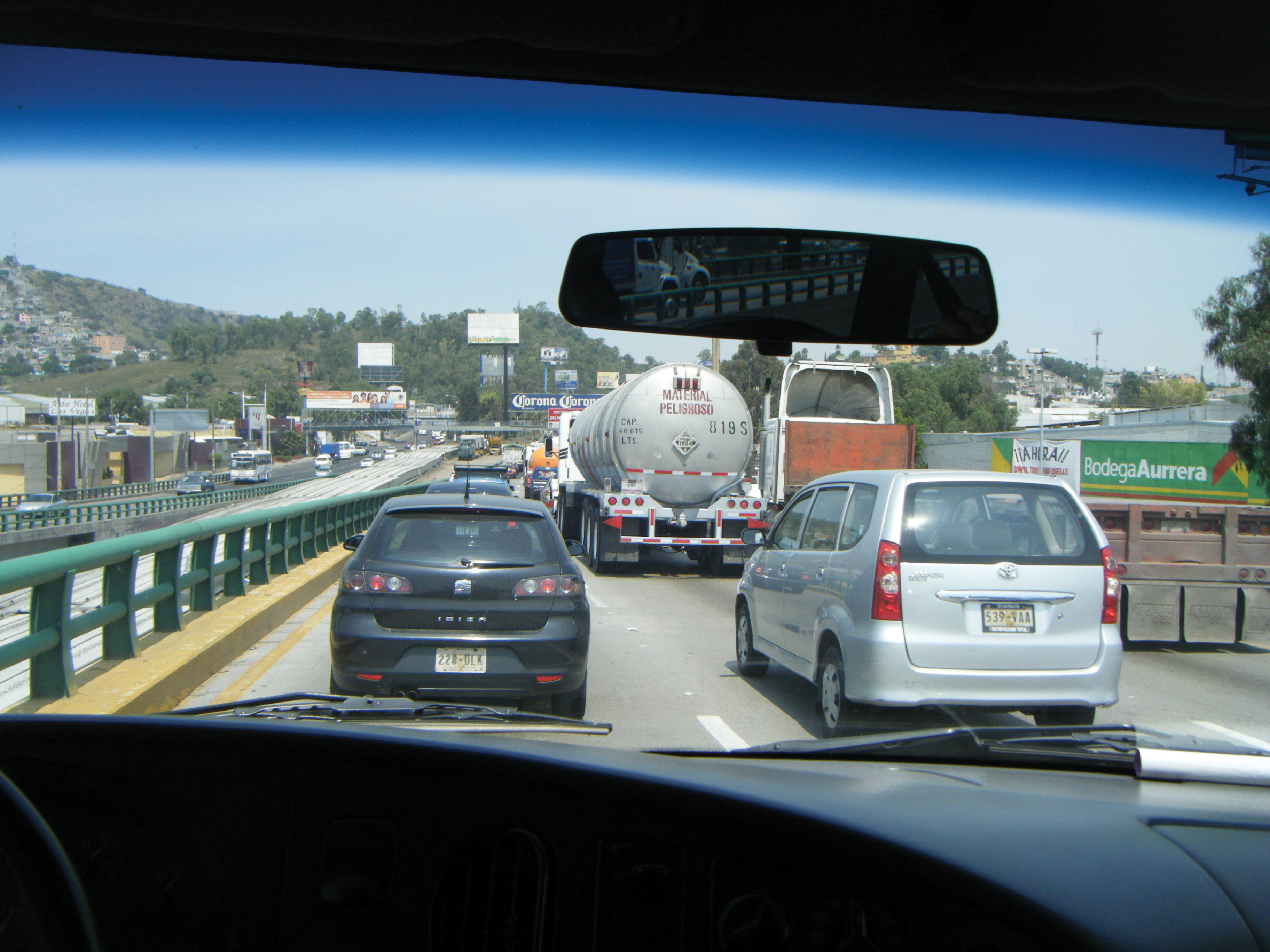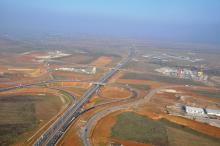
Urban mobility is high on the infrastructure agenda in Mexico. Business News Americas spoke with Salvador Herrera, executive director of the Centre for Sustainable Transport (CTS), about the elements of a sustainable transport system and Mexico City's addiction to the car
Herrera said: "The most important topic for 2012 will be the creation of an integrated public policy that benefits both mobility and urban development."
Mexico’s big cities face mobility challenges, including the construction of more highways and improved public transport.
“The centre's focus is on an integrated transport system. For the last few decades the country has focused on infrastructure dedicated to the car. We want to challenge this paradigm so that infrastructure is directed at different forms of mobility. This includes prioritising modes of transport that contaminate less, and move more people in a safe and efficient manner.
“Going by these criteria, the car loses its hierarchy, but that doesn't mean that the car should be completely discounted. We do need to have a rethink to ensure equality for other forms of mobility that do meet these criteria.”
Mexico City's mayor, Marcelo Ebrard, has provided new infrastructure for cars and trucks through large-scale construction of highways and also is investing in public transport.
“Mexico City needs a mobility agreement that includes the government and civil society, as it's difficult for a government to manage mobility issues on its own. And it's especially difficult when there is resistance from civil society to do without cars. A lack of quality public transport infrastructure keeps people in their cars but that leads to more highway infrastructure that in turn leads to more congestion. It's difficult to see a way out of this cycle.
“Both the government and civil society have to make a sacrifice, as happened in Barcelona some years ago. The convenience of driving has to be balanced against the costs to society such as contamination, congestion and noise. The government must also invest in and prioritise infrastructure that gives wider benefits to society, even if these projects take more time and are more complicated to carry out. It's is very easy to build a flyover because it is uncomplicated in terms of logistics and finances, but it is a very short-term solution. A long-term solution such as the Metrobús BRT system requires cooperation from far more stakeholders and so the government is discouraged from carrying it out,” said Herrera.
The capital's Metrobús system is being replicated across Mexico, with four systems now in operation in the country.
“The model is replicable but the physical solution varies. The model gives priority to public transport, accessibility and reliability. The physical solution can vary a lot depending on the context of each individual city.”
Some systems have faced resistance though, such as in Tampico where transport concession holders have voiced opposition. Herrera said, “It's a common theme in practically all of Latin America. There is a certain resistance from concession holders in terms of new transport projects. Generally this is due to a lack of information. The vast majority of cities don't have accurate information about mobility and so it is difficult to conduct direct, open and frank dialogue with the concession holders. Many authorities decide to conduct studies in private before launching a project and this causes a lot of tension because the concession holders and public wonder why they haven't been told. This information gathering should be part of the project and done more openly.”
There is a question over whether Mexico City residents can wean themselves off their dependency on cars.
“I think it will be very difficult. Mexico City's dependency on cars cannot be viewed in an isolated context. Petrol is very cheap in Mexico, car tax is being revoked nationwide and the government has pushed for the commercialisation of cars and the availability of individual financing. On the other hand, there's the question of urban expansion. The most important topic for 2012 will be the creation of an integrated public policy that benefits both mobility and urban development. This has been done in Brazil and Spain, where people have realised that mobility and urban development are not completely disassociated components,” said Herrera.
Mexico's mobility policies do have some similarities with Brazil as well as many differences and Herrera said, “Brazil is structurally hierarchical. The federal government has clear responsibilities, its policies and institutions are well defined and above all, the financing system is clear in terms of urban development and transport.
“In Brazil, the national government retains oversight over the states and municipalities. In Mexico, it's the opposite. The municipal governments are free to choose their own routes and there is no consistency between them. There is also no institution that groups the municipalities together to create a uniform policy in terms of land use or integrated transport systems. As a result, the municipalities do the best they can with a certain amount of influence from the state and national governments. In Brazil, if a mayor doesn't have an up-to-date urban development plan, he receives no funding from the national government. If a mayor omits part of the development plan or changes it in order to grant favours he would be immediately sanctioned. There are no such mechanisms in Mexico. Mayors receive investment with or without a plan and there is no institution that supervises the manner in which work is carried out.”
A national public-private partnership (PPP) law could attract more investment and improve public transport services in Mexico.
Herrera explained: “There's plenty of space for the government to professionalise transport provision through private companies and through mixed public-private participation. The most important aspect is the development of clear and transparent financial models under which the public sector does not take on an unbearable amount of risk. It is important that the public sector doesn't go off on any adventures, because the country's mobility is at risk.”
There are key elements for a successful and sustainable transport system and Herrera said: “A good institution that is responsible for mobility, planning, construction, operation and maintenance is necessary. A battery of financial instruments in order to raise funds is also important. In addition, there needs to be infrastructure that is accessible and convenient, that provides a large coverage and equal access across the city. In Mexico, we start with building the infrastructure and then we face the institutional challenge: how do we operate and finance the project?
“We don't look at access and equality until the end. We need to change our shortterm focus to something more long term that includes a more far-reaching agreement between government and society.”
And some costs...
Mexico needs to invest some 520 billion pesos (US$38.1 billion) in transport infrastructure over the next six years, including highways, airports, railways and ports, says Jorge de la Madrid of the National College of Civil Engineers (CICM). He was outlining the organisation's proposed National Infrastructure Plan for 2013-18.
“Over the next 37 years, transport infrastructure will require an annual 90 billion pesos if Mexico is to build a longterm, sustainable and integrated transport system, capable of driving the economy and competition,” said de la Madrid.
The main priority for airport infrastructure should be construction of a second international airport for Mexico City in Texcoco, Mexico state, according to the executive.
“Over the next six years we must invest 75 billion pesos in the construction of the second airport in Mexico City and a new airport in Guaymas, Sonora,” he added.
Rail infrastructure will need an injection of 198 billion pesos to make it more competitive with road transport, according to CICM. The organisation has proposed construction of 11 new train lines; 15 bypasses; two multimodal terminals and four passenger train routes.
In port infrastructure, construction of the Punta Colonet port remains on the agenda. The Transport and Communications Ministry (SCT) included the project in the 2007-2012 National Infrastructure Plan, but could not successfully tender the port, originally budgeted at 50 billion pesos.
CICM's port proposals include further expansion of Lázaro Cárdenas port in Michoacán state.
Highway infrastructure also features heavily in the proposed infrastructure plan, with the main aim of increasing border connections in both the north and south of the country.
CICM outlined construction of 75 highway arteries spanning 9,042km over the next 20-30 years and eight new highway arteries between 2013 and 2018.








